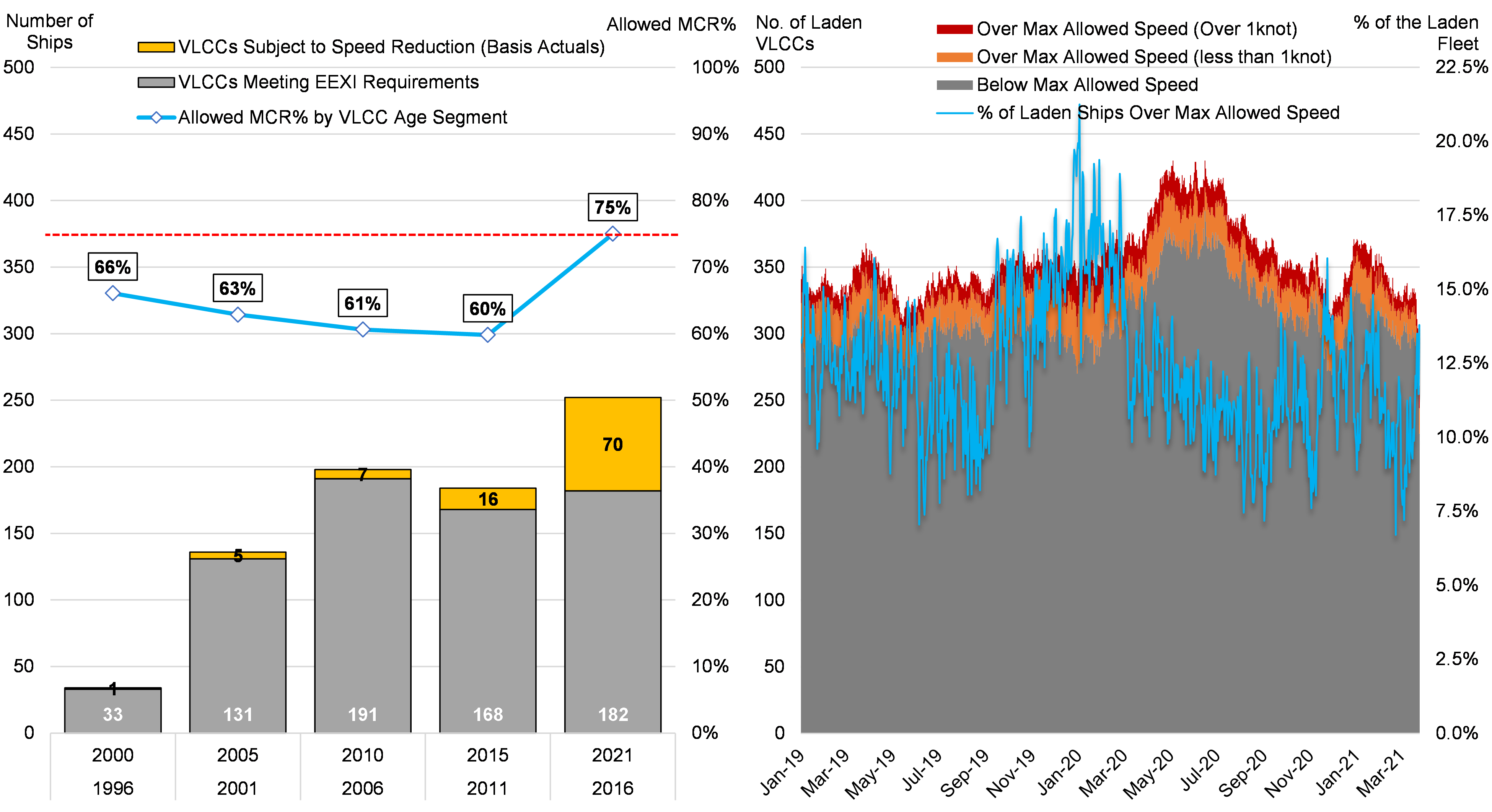Initial Findings from an EEXI Analysis on the VLCC Fleet
April 16, 2021
The International Maritime Organization (IMO) set forth its Greenhouse Gas (GHG) Strategy in 2018 with the goal of reducing carbon intensity by 40% up to 2030 and by 50% up to 2050 from a 2008 baseline. With this strategy, the IMO tightened the parameters of the Energy Efficiency Design Index (EEDI). The EEDI refers to energy efficient ship design, setting the minimum required efficiency while leaving design and technology considerations to builders. The EEDI applies to vessel being built or that will be built.
In November 2020, the IMO amended MARPOL Annex VI to include a new efficiency standard, the Energy Efficiency Existing Ship Index or EEXI. The entry of this index into force will likely come at the first quarter of 2023. EEXI, like EEDI refers to an efficiency level that a vessel in service will be required to achieve, measured as maximum grams of CO2 emitted per capacity (dwt) ton-mile under reference conditions for each vessel class. In an initial attempt to “translate” what that would mean for the tanker fleet, we looked at all VLCCs, deriving real-world operating conditions from AIS data.
As the IMO set the maximum continuous rating (MCR), essentially the engine output, at 75% under EEXI, preliminary findings show a significant percentage of VLCC tankers will be subject to engine power limitation (EPL); with the most common solution being speed reduction. However, when we compared the maximum speeds allowed under proposed EEXI standards for each vessel (note: each vessel will have a different reference line) with actual vessel speeds under laden condition from 2019, we observed less than 100 VLCCs would have been in violation of the rules (Figure 1). What is perhaps counter-intuitive is that the modern tonnage would be required to slowdown and not so much the older, less efficient ships as other analysts have concluded. This certainly adds more intrigue to this regulation and we are already digging deeper into the analysis, finding more interesting observations across the various tanker segments.
As we near the June IMO meeting that will “formalize” the EEXI regulation, we plan on issuing a white paper on the subject matter. If you would like to be included in the distribution list, please contact us at services.us@mcquilling.com.
Figure 1 – EEXI and Speed Statistics under Laden Condition for the VLCC Fleet

Source: McQuilling Services









